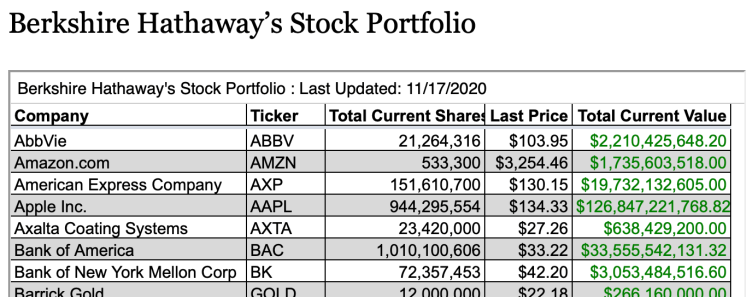
Forex vs Futures trading includes trading financial derivatives including currency, indexes, and stocks. While both markets give traders the opportunity to hedge currency exposure or speculate on foreign rates, they have their own distinct attributes and capabilities. You should choose a trading market that complements your objectives and goals, no matter what your level of skill or trading style is.
The Futures Forex Difference: A Key Trader Benefit
One of the biggest advantages of futures forex trading is that they are traded on a centralized exchange, which offers much more transparency than the spot forex spread. As the contracts are traded on a large, centralized exchange, you will know what you're doing and avoid any hidden fees. Futures trading can be done with leverage. This is an advantage to traders who are interested in day trading.
Forex Futures Trading: Futures forex trading offers a more diversified portfolio compared to the spot forex market. You can diversify your trades and lower the risk that you will lose your entire capital if your position moves against your other positions.

You can trade currency in different futures contract sizes ranging from standard to emini or emicro. This can make it easier for you to size your initial positions or to scale in and out of larger positions, depending on the amount of capital in your account.
There is also the added advantage of being able to use margin for currency futures, which enables you to hold large positions without using any of your own money. This is a feature that can be attractive to many traders and retail investors.
Even though futures have many advantages, they also have some downsides. It is important to consider them before choosing a trading strategy. Included in this are the risks of trading with a counterparty, overnight charges, and issues related to liquidity.
Counterparty risk is the risk that one party will not uphold their obligations to the contract, which can be a major disadvantage of the spot forex market. Futures are not affected by this issue because they're traded on a central exchange.

Margin requirements on Futures, Forex and Futures Contracts
In futures, there are two types of margin requirements: initial and maintenance. The initial margin must be met to open the account. However, the maintenance margin is usually lower. If your margin falls under the initial level, you will automatically lose your money if it does not rise.
Futures trading has other drawbacks, such as high volatility and a lack of liquidity when compared with the spot forex market. This can make it harder to implement strategies for long-term trading.
Research is important before making a decision about which type you will be trading. This will help to ensure that you choose a market where you can achieve your long-term goals.
FAQ
What is the difference?
Brokers help individuals and businesses purchase and sell securities. They take care all of the paperwork.
Financial advisors are specialists in personal finance. They help clients plan for retirement and prepare for emergency situations to reach their financial goals.
Financial advisors can be employed by banks, financial companies, and other institutions. They can also be independent, working as fee-only professionals.
It is a good idea to take courses in marketing, accounting and finance if your goal is to make a career out of the financial services industry. You'll also need to know about the different types of investments available.
How do you invest in the stock exchange?
Brokers are able to help you buy and sell securities. A broker sells or buys securities for clients. When you trade securities, brokerage commissions are paid.
Banks typically charge higher fees for brokers. Because they don't make money selling securities, banks often offer higher rates.
An account must be opened with a broker or bank if you plan to invest in stock.
A broker will inform you of the cost to purchase or sell securities. Based on the amount of each transaction, he will calculate this fee.
Ask your broker about:
-
Minimum amount required to open a trading account
-
Are there any additional charges for closing your position before expiration?
-
What happens when you lose more $5,000 in a day?
-
How many days can you maintain positions without paying taxes
-
How you can borrow against a portfolio
-
whether you can transfer funds between accounts
-
What time it takes to settle transactions
-
The best way to sell or buy securities
-
how to avoid fraud
-
how to get help if you need it
-
Whether you can trade at any time
-
How to report trades to government
-
Whether you are required to file reports with SEC
-
Whether you need to keep records of transactions
-
whether you are required to register with the SEC
-
What is registration?
-
How does it impact me?
-
Who must be registered
-
When should I register?
How are shares prices determined?
The share price is set by investors who are looking for a return on investment. They want to make money from the company. They buy shares at a fixed price. If the share price increases, the investor makes more money. If the share value falls, the investor loses his money.
An investor's main goal is to make the most money possible. This is why investors invest in businesses. This allows them to make a lot of money.
Is stock marketable security?
Stock is an investment vehicle where you can buy shares of companies to make money. This can be done through a brokerage firm that helps you buy stocks and bonds.
You could also invest directly in individual stocks or even mutual funds. There are over 50,000 mutual funds options.
The difference between these two options is how you make your money. Direct investments are income earned from dividends paid to the company. Stock trading involves actually trading stocks and bonds in order for profits.
In both cases, ownership is purchased in a corporation or company. However, if you own a percentage of a company you are a shareholder. The company's earnings determine how much you get dividends.
With stock trading, you can either short-sell (borrow) a share of stock and hope its price drops below your cost, or you can go long-term and hold onto the shares hoping the value increases.
There are three types: put, call, and exchange-traded. You can buy or sell stock at a specific price and within a certain time frame with call and put options. ETFs, which track a collection of stocks, are very similar to mutual funds.
Stock trading is very popular since it allows investors participate in the growth and management of companies without having to manage their day-today operations.
Stock trading is not easy. It requires careful planning and research. But it can yield great returns. To pursue this career, you will need to be familiar with the basics in finance, accounting, economics, and other financial concepts.
Statistics
- "If all of your money's in one stock, you could potentially lose 50% of it overnight," Moore says. (nerdwallet.com)
- Our focus on Main Street investors reflects the fact that American households own $38 trillion worth of equities, more than 59 percent of the U.S. equity market either directly or indirectly through mutual funds, retirement accounts, and other investments. (sec.gov)
- The S&P 500 has grown about 10.5% per year since its establishment in the 1920s. (investopedia.com)
- Even if you find talent for trading stocks, allocating more than 10% of your portfolio to an individual stock can expose your savings to too much volatility. (nerdwallet.com)
External Links
How To
How to Trade Stock Markets
Stock trading is a process of buying and selling stocks, bonds, commodities, currencies, derivatives, etc. Trading is French for traiteur, which means that someone buys and then sells. Traders buy and sell securities in order to make money through the difference between what they pay and what they receive. This type of investment is the oldest.
There are many different ways to invest on the stock market. There are three types of investing: active (passive), and hybrid (active). Passive investors watch their investments grow, while actively traded investors look for winning companies to make a profit. Hybrid investors use a combination of these two approaches.
Index funds that track broad indexes such as the Dow Jones Industrial Average or S&P 500 are passive investments. This is a popular way to diversify your portfolio without taking on any risk. Just sit back and allow your investments to work for you.
Active investing involves picking specific companies and analyzing their performance. Active investors look at earnings growth, return-on-equity, debt ratios P/E ratios cash flow, book price, dividend payout, management team, history of share prices, etc. They will then decide whether or no to buy shares in the company. They will purchase shares if they believe the company is undervalued and wait for the price to rise. On the other hand, if they think the company is overvalued, they will wait until the price drops before purchasing the stock.
Hybrid investing blends elements of both active and passive investing. You might choose a fund that tracks multiple stocks but also wish to pick several companies. You would then put a portion of your portfolio in a passively managed fund, and another part in a group of actively managed funds.